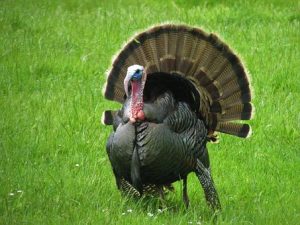 Statewide — As Americans celebrate Thanksgiving, many may not realize a century ago, wild turkeys were near extinction.
Statewide — As Americans celebrate Thanksgiving, many may not realize a century ago, wild turkeys were near extinction.
Conservation groups point to their restoration as evidence of what is possible and needed for many other species facing threats.
Congress is considering the Recovering America’s Wildlife Act, to address the estimated one-third of U.S. wildlife species facing an elevated threat of extinction.
Wild turkeys were thought to be extinct in Indiana around 1900, but in the 1950s and through 2004, more than 2,700 birds were released around the state, and current estimates put the population above 120,000.
John Kanter, the senior biologist for the National Wildlife Federation, said it is a success story the legislation could help replicate.
“I think it does show that through some dedicated funding, and through some real work on the part of state agencies and partners, there can be some amazing success stories when it comes to wildlife,” Kanter contended.
The Act would invest $1.4 billion dollars annually for states to restore wildlife habitat and migration routes, address invasive species and study emerging diseases.
In 2001, Congress mandated each state and territory submit a Wildlife Action Plan to the U.S. Fish and Wildlife Service as a condition of receiving money from a State Wildlife Grants program.
Those action plans, originally submitted in 2005 and updated in 2015, contain guidance on preserving more than 12,000 threatened species.
The Recovering America’s Wildlife Act relies on those action plans as models for each state’s conservation efforts.
Kanter sees the benefit of studying the species in depth.
“Let’s get to species, understand their populations, what they need to thrive before they head towards extinction,” Kanter urged.
The House of Representatives passed its version of the Recovering America’s Wildlife Act in June with a bipartisan vote.
The Senate bill has more than 40 co-sponsors and is ready for a floor vote.
(Story by our news-gathering partners at Indiana News Service)



